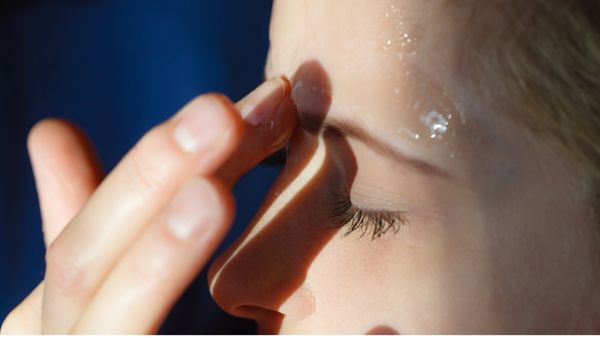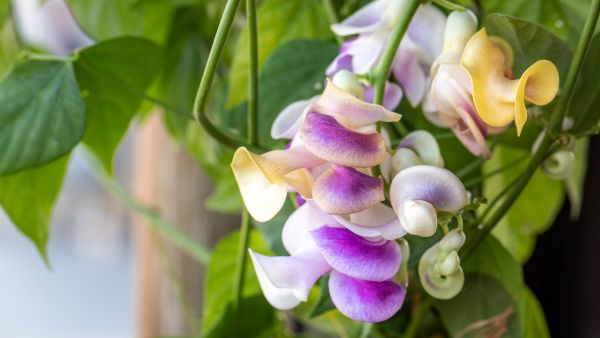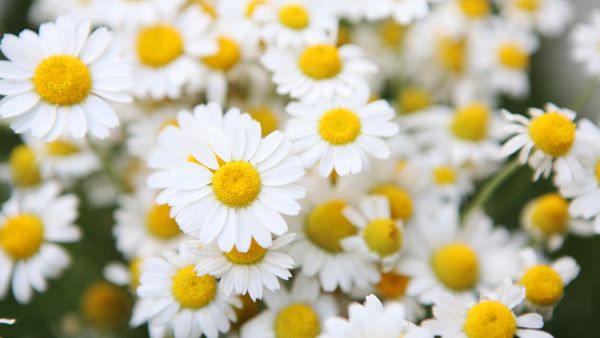The 10-in-1 Skincare Solution: How Aspen Dew Streamlines Your Routine for Radiant, Resilient Skin
As our skin evolves over time, it requires tailored care focused on hydration, firmness, and protection from environmental stressors.
Aspen Dew Illuminating Essence addresses these needs by serving as a multi-functional skincare product that replaces multiple items in a routine, making it ideal for anyone seeking simplicity without compromising on effectiveness.
Let’s dive into each benefit and explore how Aspen Dew meets your skin’s needs with powerful ingredients and thoughtful formulations. Plus, discover additional tips for enhancing your overall skin health.
1. Facial Toner: Prep and Balance Skin pH
- Why Toners Matter: Toners play a key role in balancing the skin’s pH after cleansing, which can be disrupted by tap water and harsh cleansers. A balanced pH is essential for skin resilience and moisture retention.
- Ingredient Spotlight: Aloe vera is rich in polysaccharides that soothe and hydrate, while rose oil offers mild antibacterial properties and a refreshing effect.
- Pro Tip: For best results, apply Aspen Dew on slightly damp skin to lock in additional moisture. This enhances the absorption of the following ingredients and preps your skin for hydration.
- Lifestyle Tip: Consider reducing the number of cleansing steps to prevent over-stripping natural oils. Gentle, non-foaming cleansers or oil cleansers are especially beneficial for mature skin.
2. Retinol Alternative: Gentle Cell Renewal
- Why Retinol Alternatives are Important: Retinoids promote cell turnover, helping improve texture and tone. However, they can sometimes cause dryness and sensitivity, particularly in skin that’s prone to dryness.
- Ingredient Spotlight: Dew bean extract is a plant-based retinol alternative that supports smooth, fresh-looking skin without irritation.
- Pro Tip: Incorporate Aspen Dew into your nighttime routine to take advantage of your skin’s natural repair cycle, allowing dew bean to work effectively while you sleep.
-
Lifestyle Tip: Nourish your skin from the inside out by eating foods rich in Vitamin A and beta-carotene, like sweet potatoes and carrots, to support healthy skin renewal.

3. Wrinkle Cream: Support Firmness & Reduce Fine Lines
- Why Supporting Firmness is Essential: As skin changes over time, it may lose its natural elasticity, which makes ingredients that support firmness a key part of maintaining skin health.
- Ingredient Spotlight: Edelweiss extract is rich in antioxidants that promote elasticity and smoothness by supporting collagen, fortifying the skin’s natural structure.
- Pro Tip: Pair Aspen Dew with a gentle facial massage to boost circulation and encourage deeper penetration of edelweiss into the skin. Use upward motions to help lift and firm.
- Lifestyle Tip: Adding collagen-boosting foods like bone broth to your diet can support skin's elasticity, helping it retain a more lifted appearance.
4. Antioxidant Cream: Protect Against Environmental Stressors
- Why Antioxidants are Crucial: Environmental stressors such as pollution and UV rays can accelerate visible skin changes by generating free radicals. Antioxidants neutralize these harmful molecules, helping to prevent damage.
- Ingredient Spotlight: Superoxide dismutase is a powerful enzyme that breaks down free radicals, while edelweiss offers extended protection against oxidative stress.
- Pro Tip: Apply Aspen Dew in the morning to ensure antioxidant protection throughout the day. Follow with SPF 30+ to maximize defense against the elements.
- Lifestyle Tip: Consider an antioxidant-rich diet by incorporating berries, green tea, and dark chocolate to support skin health from within.
5. Vitamin C Serum: Reduce Dark Spots & Hyperpigmentation
- Why Vitamin C is Essential: Dark spots and uneven skin tone often develop due to sun exposure and slower cell turnover. A brightening vitamin C serum helps create a more even, glowing complexion.
- Ingredient Spotlight: Bearberry extract is a natural source of vitamin C and arbutin, both which works to fade hyperpigmentation without the risks associated with harsher alternatives.
- Pro Tip: Consistency is key! Apply Aspen Dew twice daily to allow bearberry extract to work gradually, reducing dark spots over time.
- Lifestyle Tip: Supplement your routine with Vitamin C-rich foods like citrus fruits and bell peppers to naturally brighten skin from the inside out.
6. Hyaluronic Acid: Deep Hydration & Plumping
- Why Hydration is Key: Hyaluronic acid can hold up to 1,000 times its weight in water, making it essential for maintaining a hydrated, plump appearance.
- Ingredient Spotlight: Sodium hyaluronate, a smaller molecule form of hyaluronic acid, penetrates deeper to provide lasting hydration and visibly smooth fine lines.
- Pro Tip: Apply Aspen Dew on slightly damp skin, followed by a moisturizer to seal in the hyaluronic acid’s moisture-boosting benefits.
- Lifestyle Tip: Stay hydrated throughout the day by aiming for at least 8 glasses of water. Adding hydrating fruits like watermelon and cucumbers to your diet can also benefit your skin.
7. Niacinamide Serum: Enhance Barrier Function & Even Skin Tone
- Why Niacinamide is Essential: Niacinamide, or Vitamin B3, strengthens the skin barrier, reducing dullness, redness, and visible signs of environmental stress.
- Ingredient Spotlight: Niacinamide in Aspen Dew promotes elasticity and supports ceramide production, improving moisture retention and tone.
- Pro Tip: Use Aspen Dew daily to reap the cumulative benefits of niacinamide, helping to reduce the appearance of enlarged pores and uneven tone.
- Lifestyle Tip: Add niacinamide-rich foods like nuts, seeds, and whole grains to your diet to support your skin’s barrier function from within.
8. Facial Mist: Refresh & Hydrate Skin
- Why Mists are Beneficial: Mists provide quick hydration boosts and help lock in the benefits of other products when layered.
- Ingredient Spotlight: Phytoceramides help strengthen the skin’s moisture barrier, while aloe vera and sodium hyaluronate keep skin soft and refreshed.
- Pro Tip: Use Aspen Dew throughout the day to replenish moisture, especially in dry environments or after sun exposure to cool skin.
- Lifestyle Tip: Keep a facial mist at your desk or carry it with you to rehydrate skin on the go, which is especially helpful in dry indoor spaces like office buildings and in airplane cabins.
9. Ceramide Serum: Strengthen & Restore Skin Barrier Health
- Why Ceramides are Important: Ceramides are lipids that occur naturally in the skin barrier, crucial for retaining moisture and protecting against environmental damage.
- Ingredient Spotlight: Glycosphingolipids, or plant-derived ceramides, enhance resilience and moisture retention, fortifying the skin barrier.
- Pro Tip: For optimal barrier protection, apply Aspen Dew as the first layer of hydration, followed by an oil serum to reinforce the barrier and lock in moisture.
- Lifestyle Tip: Consuming healthy fats, like avocado and omega-3-rich fish, supports your skin’s natural lipid levels, which can help keep your skin’s barrier strong.
10. Calming Elixir: Reduce Redness
- Why Calming Ingredients are Needed: With age, skin can become more sensitive and prone to redness. Calming ingredients help soothe inflammation and provide relief.
- Ingredient Spotlight: Aspen bark extract is both anti-inflammatory and antiseptic, while aloe vera and edelweiss calm and nourish sensitive skin.
- Pro Tip: Use Aspen Dew as a post-sun treatment to cool and calm reddened skin. Apply chilled for an extra-soothing effect.
- Lifestyle Tip: Avoid extreme temperatures on your skin, like hot water or direct sun exposure. Incorporate anti-inflammatory foods like turmeric and ginger to calm your skin from the inside out.
Streamline Your Routine with Aspen Dew
Aspen Dew Illuminating Essence is more than just a single skincare product— it’s a 10-in-1 facial treatment, designed to nourish, protect, and revitalize your skin.
By incorporating Aspen Dew into your daily routine, you’re not only saving time but also ensuring that your skin receives comprehensive care to stay resilient, radiant, and healthy.
For those looking to simplify their skincare regimen while maintaining a luminous, refreshed appearance, Aspen Dew Illuminating Essence offers a convenient, powerful alternative that delivers exceptional results in a single bottle.
Continue reading













